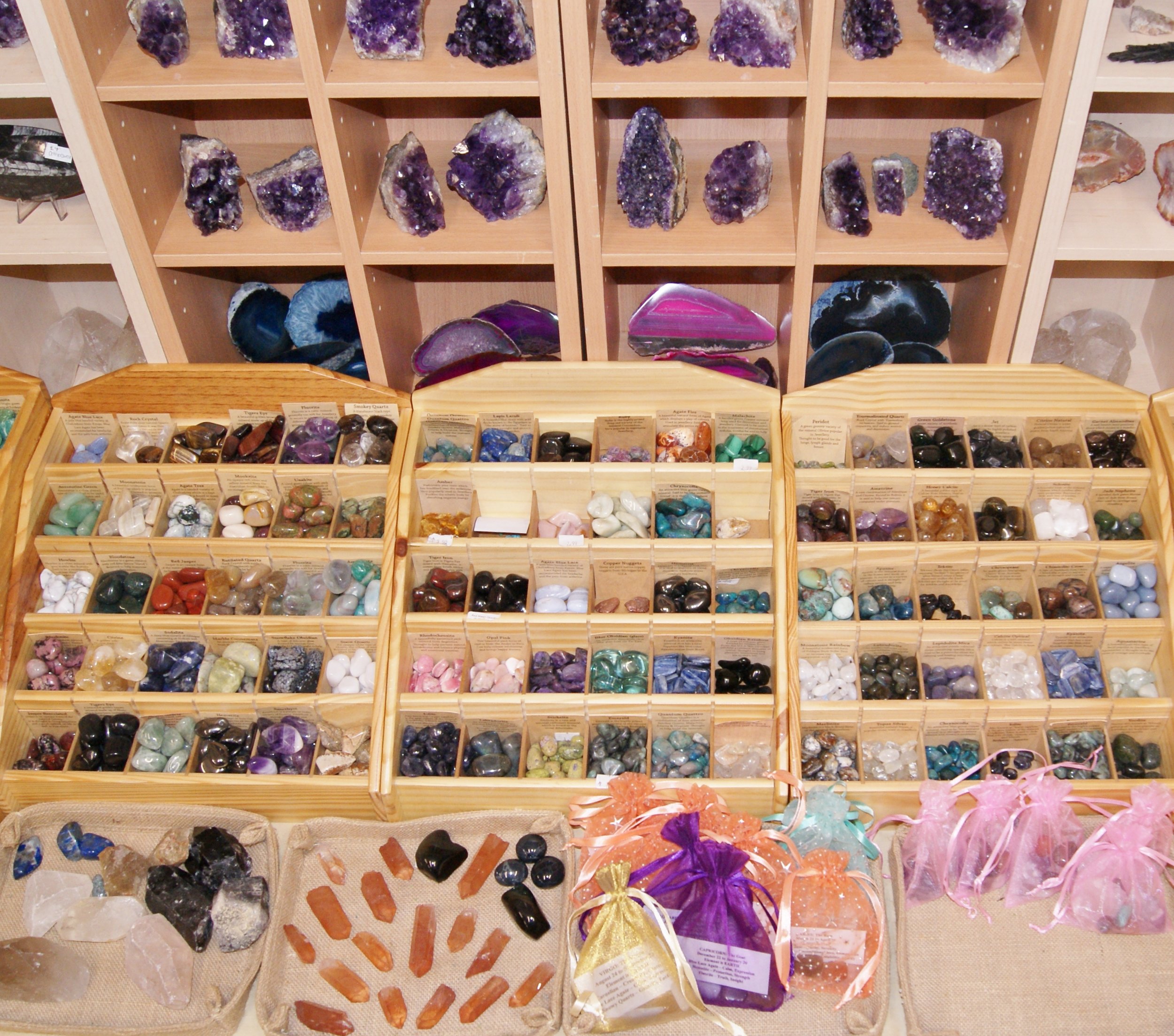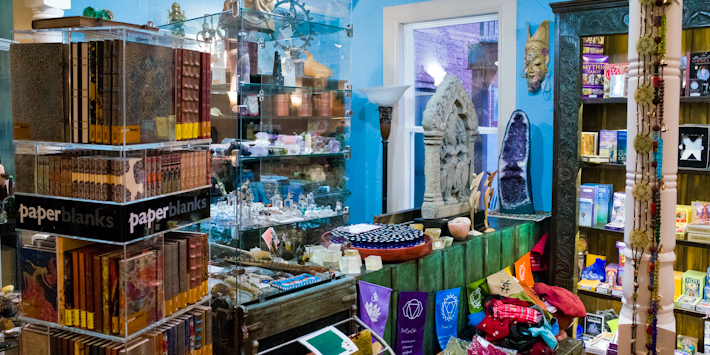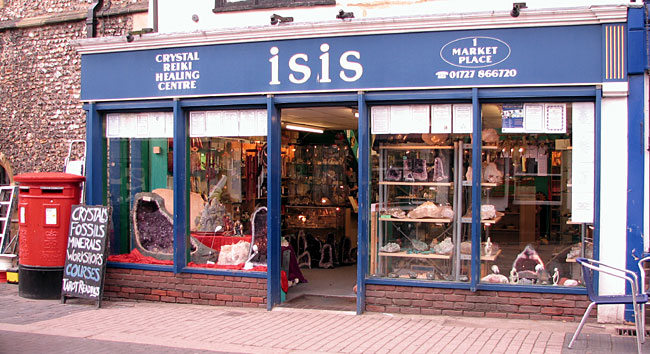Crystal Unclear: Does the Billion-Dollar Crystal Healing Industry Heal or Exploit?
Crystal Unclear: Does the Billion-Dollar Crystal Healing Industry Heal or Exploit?
by Woody Woodger
Pre-Op Thot is a biweekly column by Woody Woodger. “As a transgender anarcho-commie poetry slut, I’m here to derail the economy with my ethically sourced avocado toast and ruin every Thanksgiving with my colonialism PowerPoints. This column will have that same vibe, but I’ll jam poetry and Camus somewhere in there, and you can’t stop me. Through this column, I intend to do bite-sized deep dives into underrepresented aspects of the contemporary Zeitgeist, grounding my discussion with theory, research, and poetry that I think relative to each topic. But don’t worry, it won't all be fun. My teachers, Youtube commenters, and therapist all say my writing is a “huge bummer.” So if you're looking for a column that says “Last-Week-Tonight-but-make-it-discount-Contrapoints”, I’m your gal. So good luck out there, Gorge! God’s dead, smash the patriarchy and remember sunscreen. Love you!”
…and soon there were
eight or nine
people gathered beneath
the tree looking into
it like a
constellation pointing
do you see it…
—to the fig tree on 9th and christian by Ross Gay
In a wealthy Boston suburb, there’s a crystal shop with a wizard in the yard. The wizard turns his head to look at the owl on his shoulder, but the owl does not reciprocate. The house is bright yellow with round windows, airlifted from the set of Lord of the Rings.
I am here buying healing crystals. Correction: I’m here to learn how to buy healing crystals.
My friend back home has her own crystals, which she keeps next to her tarot cards and herbal teas. I shop for nothing in particular as I’m here on official, totally-objective, journalistic business, but I can’t help but scour the bin of polished, delicate stones—these ticket stubs from true volcanic alchemy—neatly piled into labeled bins.
One stone is a deep purple, ribbons of gristle giving it a marble appearance, but I know it can’t be that easy. I look, and the label tells me “Charoite.” On second glance, it looks like a fig, but more cosmic and expensive.
In Ross Gay’s poem “to the fig tree on 9th and christian”, from his collection catalog of unabashed gratitude, we are virtually a liquid as the speaker immerses us in an unassuming Pittsburgh street that splendidly succumbs to a community miracle. The poem revolves around a fig tree “…which everyone knows / cannot grow this far north” (111-12) and yet survives, exists and serves as a spiritual conduit for the immigrant people that gather.
Gay’s poem is one in a long tradition of poetry that uses naturalist images to explore existential questions often reserved for the theological. The speaker in the poem incorporates themes or miracle, violence, fate, charity, and love, yet does not evoke a god specifically, but rather “a constellation” and “anthopormophizes” the fig tree. Even in full view of Christendom (taking place on Christian St.) and the biblical significance of the fig tree, Gay suggests what’s most important is framing spirituality and morality as material, human concerns.
Gay accomplishes this framing by exulting the community, its people, and the spiritual transformation that results—“this is true / we are feeding each other…strangers maybe/ never again.” (133-38).
As I hold the petrified fig of Charoite, as I look at locally sourced candles, soaps and goat milk moisturizers, pick though incense next to a copy of 7 Habits of Highly Effective People, next to a knockoff Necronomicon, next to unicorn make-up brushes, I wonder if the secular spirituality is what Gay has in mind.
But being the dispassionate, fair-and-balanced journalist that I am, I don’t dare be hasty. Charoite, or (K(Ca;Na)2Si4O10(OH;F)·H2O), probably attracted me, according to CrystalDictionary.com, because it is also a Scorpio. Along with “a monoclinic crystal system, a Moh’s scale hardness of 5-6, a specific gravity of 2.54-2.58”, CrystalDictionary.com suggests that Charoite is “one of the very best illuminators and dream stones present in nature” and can help with anything from accessing past lives, getting hired, and helps prisoners. Any assertions of the crystal’s supposed properties and abilities are not mentioned and no links are provided besides a purchase portal to CystalDictionary.com’s parent crystal retail site Points of Light.
The rationale is: if crystals have the potential to conduct electricity, and thoughts are materially electronic impulses, then crystals can resonate with our vibrational energies, facilitating physical and spiritual healing. Is it worth it? Photo courtesy of Pinterest.
Crystal’s healing and spiritual properties are further undergirded in “Crystal Crash Course: A beginners Guide to Healing Crystals” by Heather Askinosie wherein we learn crystals’ mysticism is not speculation, but rather based in scientific research and measurable. Specifically measurable are the “vibrational energies” that crystals possess as evidenced by “quartz [making] up 12% of the Earth’s crust and [being] used in almost every kind of technology, including time keeping, electronics, information storage, and more.” Additionally, the article say “IBM researcher Marcel Vogel” found while observing crystals that “[the crystals] shape took the form of whatever he was thinking about” and the crystals would reassemble their molecules based on the metaphysical impulses of those who possess them.
The rationale is: if crystals have the potential to conduct electricity, and thoughts are materially electronic impulses, then crystals can resonate with our vibrational energies, facilitating physical and spiritual healing. If we read Gay’s poem with this lens, we can see why the poem devoted so much (ahem) energy…and praise to the location and natural elements therein. The fig tree, the street, the building walls, a handkerchief—these elements swirl in the poem and, because the poem is an address to the fig tree itself, we get the sense that the energy and memory of that moment, or the “vibrations,” reside in the fig tree itself. Thus, the fig tree acts as both a spiritual center that draws the people in the poem together, as well as a conduit for the speaker to reaccess that emotional space while writing the piece.
At the gem buckets, I do not feel Askinosie’s or Gay’s vibrations. I pick through the selenite, the amazonite, the jasper, gypsum, desert rose, carnelian, heliotrope, onyx, turquoise, chalcedony, emerald, obsidian, pyrite, the clear quartz, rose quartz, blue quartz, black quartz, milky quartz, amethyst (or purple quarts), and citrine (or yellow or orange or a mixture of those colors of quarts).
Sometimes the clerk helping me grabs a stone like a tiger shark in a bread line, other times with the delicate curiosity of wine connoisseur—“Ah, this amethyst comes with minor streaks of kunzite. I could use a little maternal support inlaid into the amethyst’s healing properties.” Such admiration and wonder fills his voice as he warms the stone between his fingers, and I envy how easy miracles come to him. Seems like he finds his fig every day.
“Sometimes the clerk helping me grabs a stone like a tiger shark in a bread line, other times with the delicate curiosity of wine connoisseur—“Ah, this amethyst comes with minor streaks of kunzite. I could use a little maternal support inlaid into the amethyst’s healing properties.” Such admiration and wonder fills his voice as he warms the stone between his fingers, and I envy how easy miracles come to him. Seems like he finds his fig every day.”
He’s not the only one. The crystal industry is now a multi-billion dollar industry and clearly a deeply held, if not amorphous belief system surrounding their applicability. And I find it interesting that faith in crystal healing is crafted using such scientific language. According to Steven Reiss, professor emeritus of psychology at The Ohio State University, this scientific mysticism might resonate with those who are otherwise adverse to traditional forms of religion. Reiss suggests that there are 16 desires that motivate people, all of which individuals express to varying degree, and all of which religion is satisfies. All of which aside from independence. “Independence”, Reiss says, “may separate religious and non-religious people…[as] those who were not religious…showed a stronger need to be self-reliant and independent.”
We’ve already seen how Gay’s focus on natural imagery express the desire for a secular faith that Reiss’ research suggests, but the secular faith in Gay’s poem has a communal component that is not necessarily considered by Reiss. The speaker begins the poem “Tumbling through the / city in my / mind without once / looking up (1-4)” first framing the piece as an internal meditation, internalizing the city—the conduit for the speaker’s spiritual journey—initially reinforcing Reiss’ assertion.
But Gay then expands on Reiss scope. As the poem progresses, we see the city, the speaker, and the community (an expression and extension of the city) as permeable. For instance, the woman sweeping by the fig tree “…says take / as much as / you can / help me (40-43)”, implying that by embodying with the city’s spiritual energy, the speaker and the city inherently engage in a spiritual dialogue and form a relationship through which both are elevated.
Crystal healing too has this communal aspect—stores, online forums, healing gatherings. In this way, crystals themselves, and the culture surrounding crystals, could serve as one kind of secular faith. Beyond that, there might even be some scientific basis to the use of crystals. The placebo effect describes the phenomenon where people report feeling the same effects from a sugar pill as they do from taking actual medication when they don’t know which they are taking. A study found that crystals share this placebo effect.
What seems to be the common thread in eliciting a desired effect is not whatever the person uses to elicit that effect, but the ritual itself, whether that be taking a pill or rubbing a crystal on your forehead to retrieve a memory.
“Crystal healing, the crystal industry, serves a market—a wealthy consumer base disillusioned with, or simply less inclined to traditional religion, yet still in need of some spiritual ritual that could take the place of that lost religion.”
What I struggle with is why the price of crystals must be so high. I cave at the shop. This place is reasonable, actually, relatively. The receipt says $38.50. That’s about 9 stones. Everything I buy, all these fits in the palm of my hand like a family of sleeping beetles. The clerk gives me an extra velvet bag as a thank-you.
There are larger pieces at the shop. One prehistoric-looking quartz from Costa Rica has no price tag. The clerk grins when I ask. He says it floats around $8,000-10,000, but that, really, the price is incalculable. In an article for The New Republic, Emily Atkin reveals the less that transparent practices of the crystal industry, citing industrial mining and trade shows that make it hard to trace the sale and direct impact of crystals. What is known, she says, is that children as young as seven work mines in the Congo and The Dominican Republic and that Myanmar Jade “has ‘helped finance a bloody ethnic conflict and unleashed an epidemic of heroin use and H.I.V. infection among the Kachin minority who work the mines.’” In essence, the sellers buy the crystals for cheap in woefully unregulated international backchannels and sell those same crystals for consumers at exorbitant market price.
In contrast to the exploitation and human misery of the crystal industry, Gay’s poem provides us with an experience of secular faith that empowers the community as much as it takes. The speaker and others in the poem share in the fig tree, eat its fruit, and experience each other within the moment. In reference to this shared, human-centered spiritual connection the speaker says, “people / this is true / we are feeding each other / from a tree (132-35)”. In this moment, all parts of this spiritual experience are accounted for, necessary, and uplifted by the presence of each other. And no one had to buy a thing.
Crystal healing, the crystal industry, serves a market—a wealthy consumer base disillusioned with, or simply less inclined to traditional religion, yet still in need of some spiritual ritual that could take the place of that lost religion. The cost to fulfill this need is evident not only in the absurdity of a $66 dollar jade vaginal plug, but in the incalculable human suffering it takes to offer people the privilege. Atkin begins her article by referencing “the influential spiritual healer Heather Askinosie” (there she is again), and her blog post detailing a series of megastormes in 2017, and suggests that one thing we could really do to help appease Mother Earth and restore balance to the world is to use crystals. We could align our positive energies, bring balance to ourselves, and if we do, the implication is that maybe these storms would not have happened.
Using a tragedy to hawk your blood-diamond-adjacent products while (intentionally or otherwise) shaming the victims of that tragedy for not having the foresight to take out a second mortgage for a hunk of black tourmaline red jasper point for your porch, is obviously a bad look. But this exploitation and abuse is the fault of no one sleazy distributor or shop owner. It’s a failure of a capitalist market that is all too happy to commodity a genuine need for spiritual enlightenment. It’s a shame. Because look how easily, how free Ross Gay thinks the same could be done—with a ripe fig, some teeth, the courage to bite.
Sources
Pro Crystals:
https://www.energymuse.com/blog/beginners-guide-to-healing-crystals/
https://themindunleashed.com/2014/10/science-catching-up-ancients-crystal.html
Placebo Effect Overview:
https://www.health.harvard.edu/mental-health/the-power-of-the-placebo-effect
Placebo Effect of Crystals on Users:
https://sciencebasedlife.wordpress.com/2011/09/05/crystal-healing-magic-cures-or-just-rocks/
Mind Body Dualism:
https://www.youtube.com/watch?v=q8uM9_tbfCI
http://spot.colorado.edu/~heathwoo/Phil100/mindintro.html
https://www.simplypsychology.org/mindbodydebate.html
Why do humans seek faith:
https://news.osu.edu/the-psychology-behind-religious-belief/
Literature Used
Ross Gay - “To the Fig Tree by 9th and Christian”
As seen in the Academy of American Poets
Woody Woodger lives in Lenox, Massachusetts. Her work has appeared, or is forthcoming, from DIAGRAM, Drunk Monkeys, RFD, Exposition Review, peculiar, Prairie Margins, Rock and Sling, and Mass Poetry Festival, among others, and her poetry has been nominated for Best of the Net. Her first chapbook, “postcards from glasshouse drive” (Finishing Line Press) has been nominated for the 2018 Massachusetts Book Awards. In addition, Woodger served as Poet in Residence with the Here and Now in Pittsfield MA. She is a poetry reader for COUNTERCLOCK Journal. In this column, she intends to do bite-sized deep-dives into underrepresented aspects of the contemporary Zeitgeist, grounding her discussions with theory, research, and poetry relative to each topic. So if you're looking for a column that says “Last-Week-Tonight-but-make-it-discount-Contrapoints,” she’s your gal.






